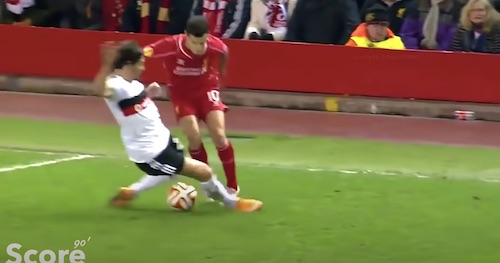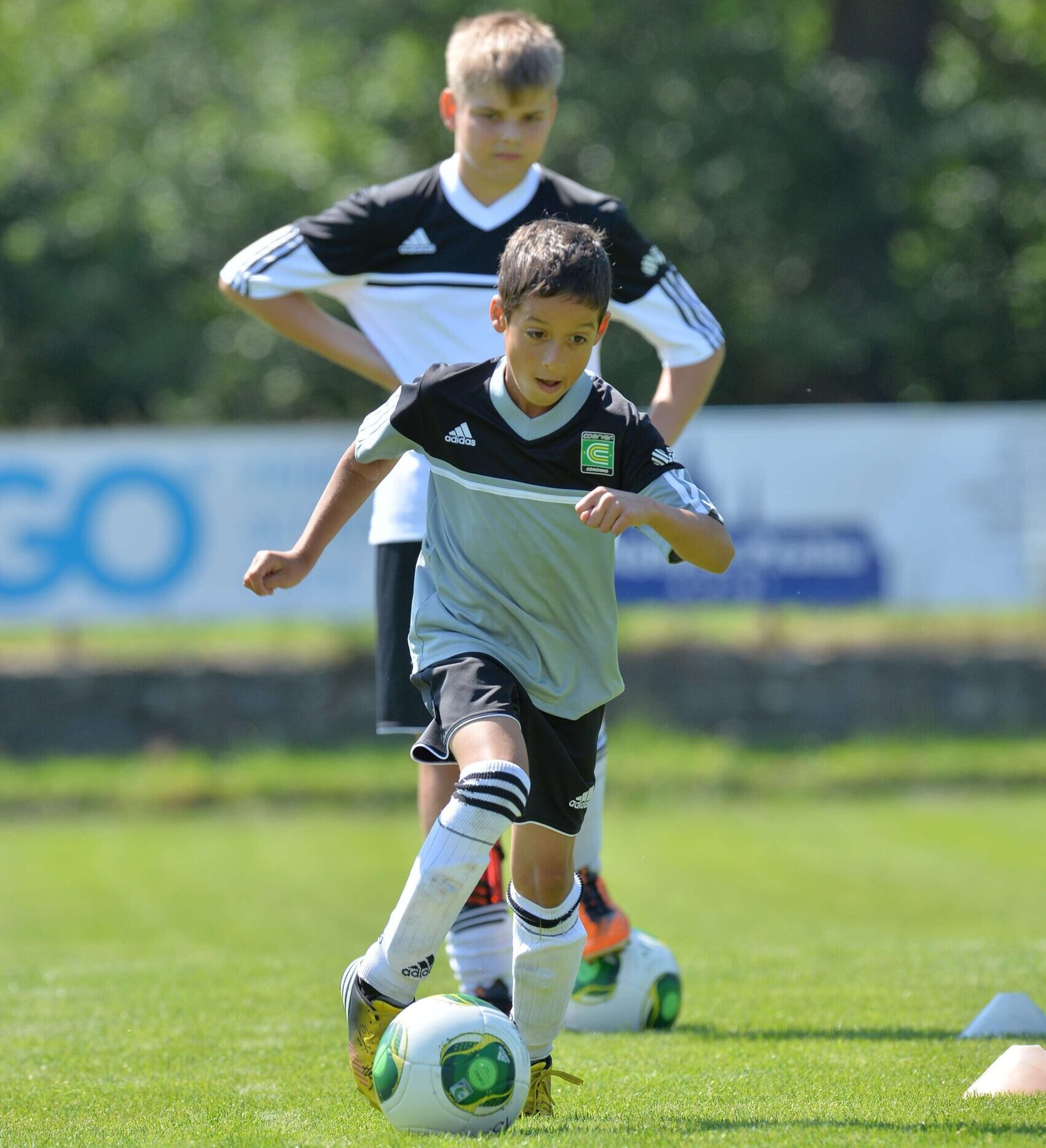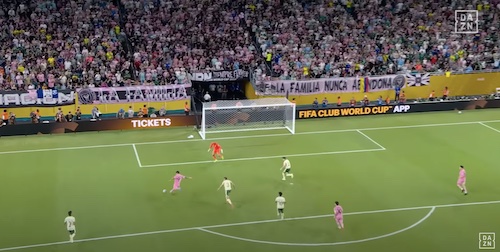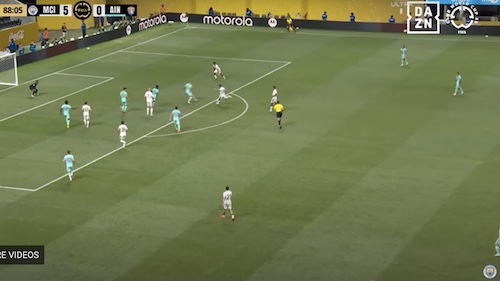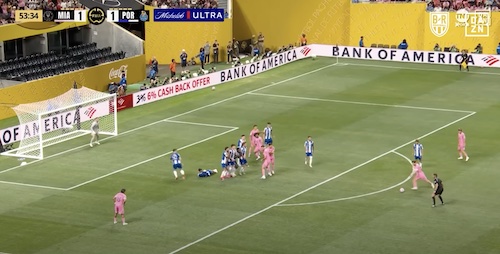Creativity was once thought to be the “magic gift” that was possessed by only the select few in soccer, but it is a “magic gift” that everyone has access to. Football (Soccer) is a very simple game, and the real definition of creative genius is the ability to see this simplicity in each and every soccer drill or soccer training form, and do it every time with “new eyes, ears, and thoughts”. Creativity is an awareness of new answers to old problems.
In the above picture, that’s Coutinho maintaining his calm and putting the soccer ball through the legs of an over eager defender.
Even the most mundane, childlike soccer drills can be made to expand into exciting and challenging drills.
Today we are going to put these ideas into practice, and demonstrate how to expand into complete new areas, taking absolutely basic set up soccer drills and taking them into realms of fantasy.
Modern football, is physically stronger, faster, more organized, tactically more aware, but can still be completely disarmed with one touch or movement of creative skill or movement. The most sophisticated systems, organized shapes, tactics are undone in a flash by a sublime body move, or a touch, so this area must be worked on in the same ratio to the other parameters of football (physical. technical, tactical).
Creative football (soccer) training encourages through a series of drills, movements and applications, the participant to explore the imagination and spiritual side of their being. Creative football is not forgetting to have fun while playing the game and try new things. Which Ronaldinho never forgot when he played for Barcelona.
Most soccer training drills are, by their very nature linear and very “left-brained”, but the right side of the brain that is the so called “creative centre” needs to be worked to the same degree. When most people have a problem they are encouraged to work harder to overcome that problem, but what if they are working to their limits, what I propose is to imagine harder solving the problem.
The balancing of the football training is of fundamental importance in the needs of the modern player, a strong body and a strong mind, reactive and though provoking drills should be given the same emphasis as the rest of the work. To train the creative side of your brain equally as much as the logical side, creativity does not just happen, it is trained for and can be greatly strengthened and improved.
As one trains the body to get stronger through the overload principal then that very same rule applies to the mind, and through a series of progressive drills that continually make the mind and body expand, the creative juices starts flowing.
Do not be limited to past experiences, constantly strive to explore new horizons and ways of thinking about the game of soccer. Why use only one ball in a game or drill, why only play two teams against each other, why only have two goals to score in and defend, if you remove these barriers it makes the coach/team think differently to overcome the new problems!
By filling the mind with these tasks the body also has to adjust to compensate, and in turn becomes more flexible, strong, and mobile.
By working on multi-levels (ground, air, and after a bounce or deflection), a state of continuous adjustment and re-adjustment takes place, so each and every player is always prepared for all eventualities that can happen during a game. Using a series of training drills a new mindset and body awareness is achieved.
Soccer training is of a modular fashion, building from a basic start, and each step adding a problem to be solved, then another, and another, until the end product is forever different.
Example 1: Line drill.
1. Two teams, one ball, one direction.
2. Two teams, two balls, one direction.
3. Two teams, two balls, change direction.
4. Four teams, four balls, one direction.
5. Four teams, four balls, change direction.
6. Four teams, four balls, change balls, one direction.
7. Four teams, four balls, change balls, change direction.
8. Four teams, four balls, change balls, multi-direction change.
9. Four teams, four balls, change balls, multi- direction change, receive balls.
Example 2: Reactive drill.
1. Two players, one decision.
2. Two players, two decisions.
3. Two players, three decisions.
4. Two players, four decisions.
5. Two players, one decision, followed by your opponent’s decision.
6. Two players, two decisions, followed by two opponents decisions.
7. Two players, one decision, opponent decision, your decision.
8. Two players, two decisions, opponents two decisions, two of your decisions.
9. Two players, the coach relays the decisions, 1,2,1, your decision, two of your opponent’s decisions, one of your decisions.
The left hand line is the initial decision making group, and after each run each player jogs back to the end of the opposite line.
The player can decide exactly what he wants to do, either sprint forwards to one pole, then sprint backwards diagonally to another pole, etc.
The player in the other line has to mirror exactly the opponents “decisions” and movements. Walking, jogging falling, jumping, sprinting, are all soccer movements, so duplicate them in training.
These are just basic examples of how very simple drills can be made more, creative, intense, and thought provoking.
Your body has its own limits but your mind is endless.
The number of ideas it is possible for your brain to create is greater than the number of atoms in the known universe.
All aspects of training whether mental or physical can be “overloaded” to produce lasting and beneficial results.
Learn more: Get Faster – Speed Training











